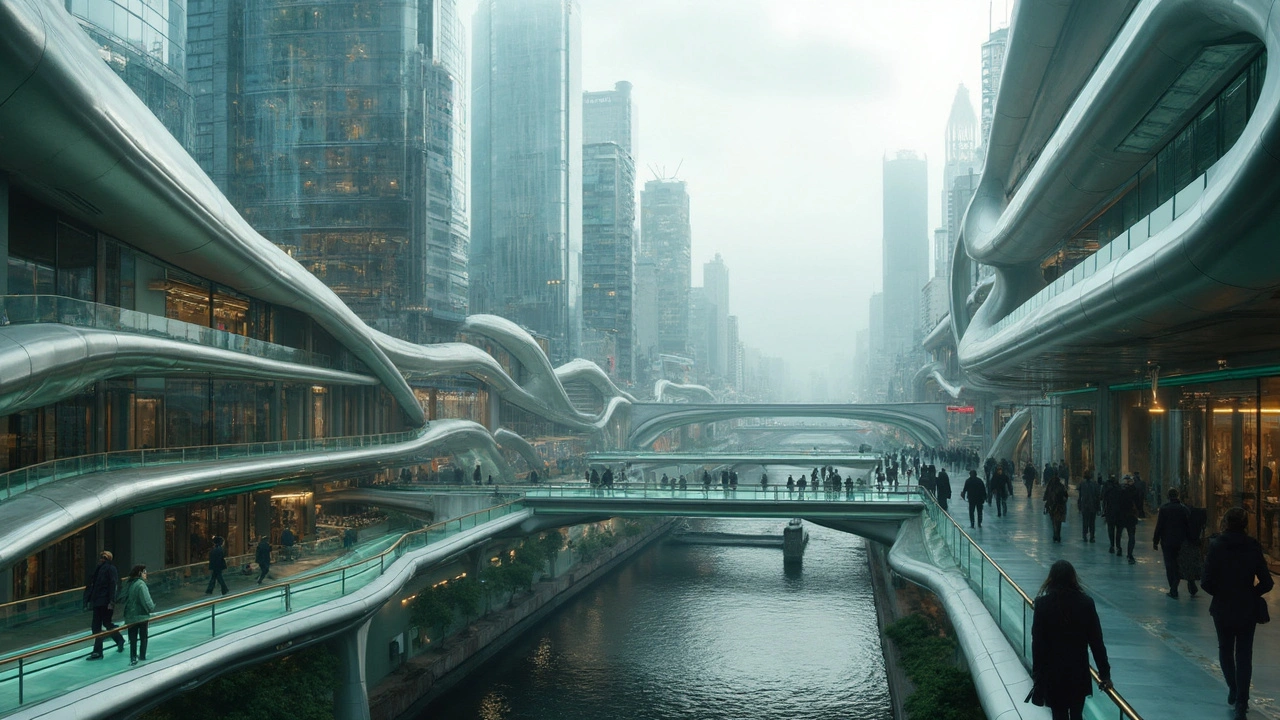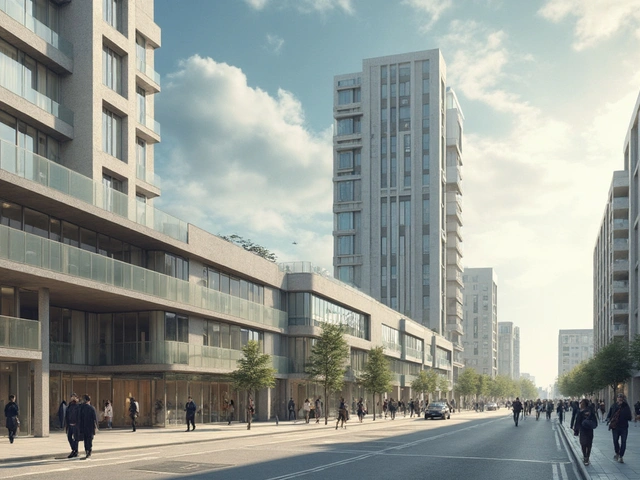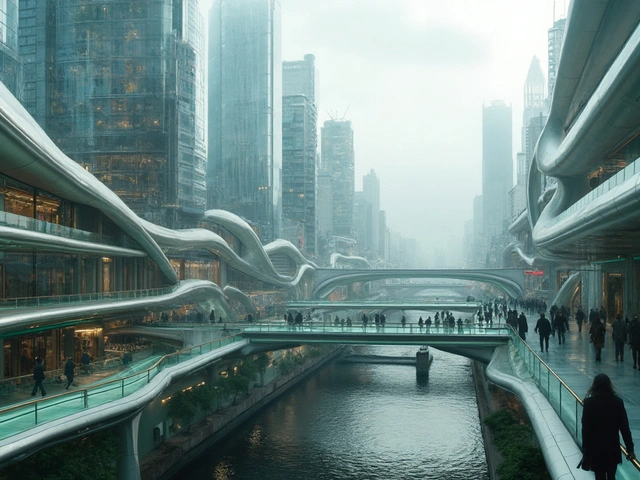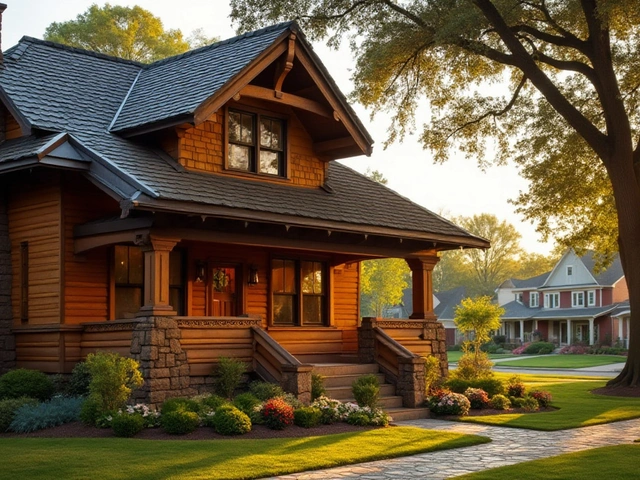Picture yourself walking along a street, and suddenly a building catches your eye—not just because it’s tall or shiny, but because it feels like you’ve jumped a few decades ahead in time. That’s the power of neo-futurism—a design movement that isn’t just about what's new or pretty. It’s about pushing the boundaries so hard you feel the future staring back at you. Some critics have called these works ‘alien’ or ‘utopian’—and honestly, that’s part of the magic. You’re not just seeing a building or an art piece. You’re seeing a whole new vision for how people could live, work, and experience space.
What Sets Neo-Futurism Apart?
Let’s get one thing straight: neo-futurism isn’t just a wild offshoot of modern architecture or art. It popped up around the early 21st century as a direct pushback against the boredom of bland glass towers and soulless industrial shapes. What you get with neo-futurism is a mashup of cutting-edge tech, experimental shapes, eco-consciousness, and a weird kind of optimism that’s almost contagious.
Take Zaha Hadid’s Heydar Aliyev Center in Baku, Azerbaijan. It doesn’t even look like it should stand—that rippled, wave-like shell just flows in and out of itself. Or look at the works of Santiago Calatrava, like the Oculus at New York’s World Trade Center. There’s an energy to neo-futurist works that wakes up any place they land.
Neo-futurism isn’t just about doing things ‘differently’ for the sake of it. The best examples genuinely use emerging tech—from custom 3D-printed building materials to software that simulates wind patterns around a structure. It’s design informed by science fiction but made real. Think curves that defy logic, structures that act like living things, even windows that clean themselves. There is a belief here that design can actually shape the way society works, connecting people better while being kind to the planet.
Even the way cities themselves are planned starts to shift under the influence of neo-futurism. Urban designs inspired by natural forms, or even entirely new city layouts that adapt to rising seas or rapid urbanization, all come from the same impulse. The future isn’t about buildings that last forever. It’s about places and spaces that keep up as our lives, tech, and environment keep changing. If you want to know where your own city’s headed, keep an eye on where the neo-futurist designs are popping up.
Famous Examples and the Minds Behind Them
No conversation about neo-futurism makes sense without checking out the creators setting the bar. Neo-futurism pops up in so many forms, but some names keep showing up, shaking things up in the best way.
Zaha Hadid is basically a superstar here. Her work on projects like the Galaxy SOHO in Beijing or the London Aquatics Centre for the Olympics turned cold, geometric design on its head. She believed that cities should flow and move, just like the people in them. If you ever get to stand in front of one of her buildings, it’s like seeing the future in concrete and glass. The lines bend and melt, yet somehow feel organic—alive, almost.
Then there’s Santiago Calatrava, whose bridges and transport hubs turn what should be boring infrastructure into jaw-dropping landmarks. His style uses bird-like forms and often mirrors nature itself, like the Milwaukee Art Museum’s wings that open and close each day based on the sun. These buildings feel like they belong in some alternate reality, but they’re right here, challenging our ideas of what a city should look like.
Elsewhere, smaller studios and artists push neo-futurism into new territory. The Eden Project in England—massive bio-domes blending science, nature, and art—has inspired dozens of similar projects, making spaces that practically rewrite the playbook for green design. In the visual arts, creators like Lucy McRae play with the boundaries of tech, biotech, and the human body, showing what it means to live in a world where biology and circuits might blend.
Don’t leave out city-scale ventures like Masdar City outside Abu Dhabi. Designed for zero carbon emissions, it uses AI-powered systems for traffic and energy, blending sci-fi tech with desert sustainability. The trend doesn’t stop at new buildings. It bleeds into how entire neighborhoods address the future—think smart homes with responsive facades or public parks that collect data on air quality to adapt their foliage and open times.
Sometimes, the most exciting stuff comes out of cross-pollination. When architects work with software developers, or when choreographers team up with urban planners, the results get wild—like When I Dance, the City Moves, a 2021 project matching dancers' motions to city light installations in Seoul. Neo-futurism loves that kind of mashup, where different forms of creativity feed each other and nobody quite sticks to the old rules.
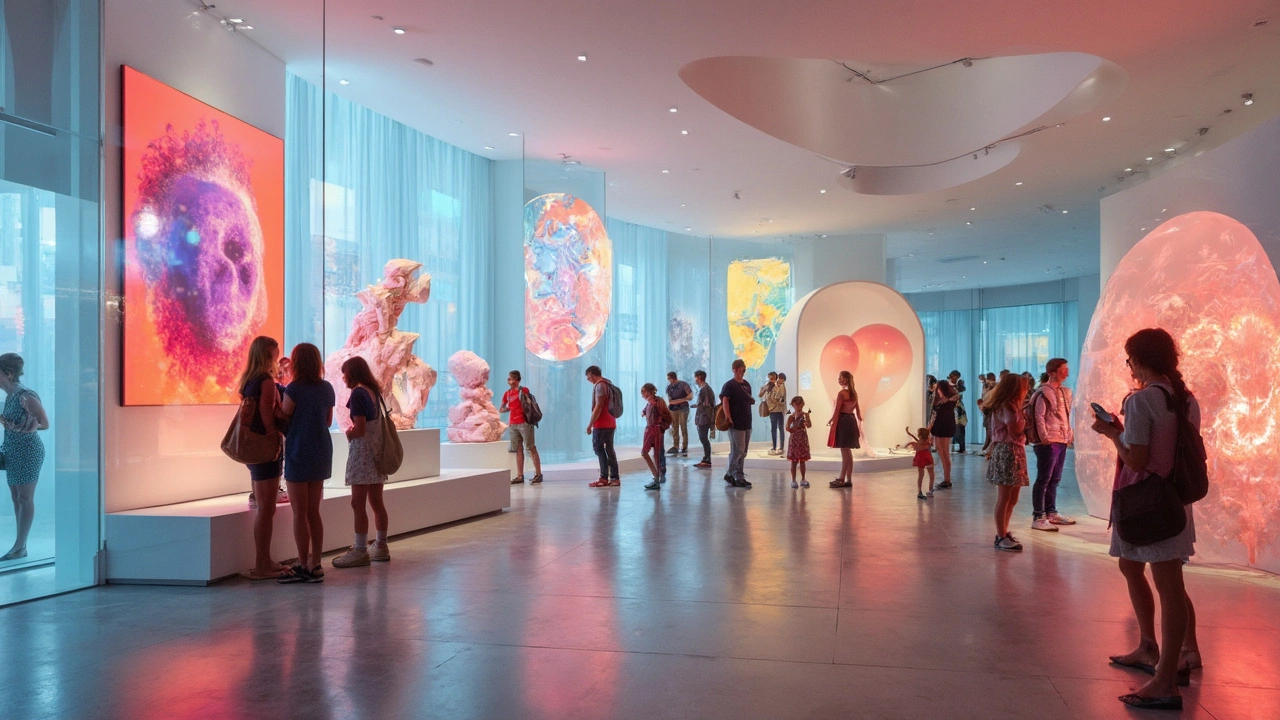
Neo-Futurism in Everyday Life
You might think all of this sounds out of reach—maybe reserved for people with billionaire clients or cities with bottomless budgets. But neo-futurism is sneaking into everyday life, little by little. Those sleek headphones with touch controls? Probably inspired by neo-futurist designers paying attention to both function and form. New models of smart cars with sculpted exteriors don’t just look cool; they’ve often been shaped using the same software and philosophies guiding tomorrow’s mega-buildings.
Your city might have bus shelters with solar panels now, or street lights that use wind and kinetic energy. Even the way smartphones are designed borrows heavily from this movement: smooth lines, seamless interfaces, a focus on blending human needs with the latest tech.
One underrated tip: start looking at public installations. Interactive art in city squares, or benches that light up as you approach, often use similar idea pipelines as those massive buildings. Designers think about how people move, gather, and respond—and they experiment with new tech, from sensors to sustainable materials. Try snapping photos of urban features that make your city feel unique, then dig into who designed them. You’ll find that a lot of these details come from neo-futurist minds.
If you want to bring a dash of this vibe into your own world, get a plant-based composite desk lamp or a digital art frame that adapts to weather data. Even picking up clothes from brands that use self-cleaning nanotech fabrics turns your daily routine into a bit of a sci-fi adventure. Sometimes, all it takes is swapping out one everyday object—a lamp, a chair, a bike—for something with fluid lines, recycled materials, or a story about sustainable design. That’s how the movement grows, bit by bit.
- Tip: Follow emerging architecture firms on Instagram. You’ll get front-row seats to experimental designs way before they ever break ground.
- Tip: Experiment at home with modular furniture—stackable, moveable, multi-use pieces tap directly into neo-futurist principles.
- Tip: Try out lighting with color-shifting LEDs, or home assistants that integrate with energy-saving routines. These gadgets channel both the practical and dreamy sides of the movement.
How to Spot and Encourage Neo-Futurism
If you want to feel the pulse of neo-futurism where you live, keep your eyes open for a handful of traits. Watch for architecture with bold, organic curves instead of straight boxes, or for public spaces that invite interaction instead of just standing around unused. Check out if your city is piloting any smart tech, from AI-driven traffic flows to eco-friendly transit hubs. These are early signs your community’s tuning into the future, not just coasting on the past.
Encouraging neo-futurism doesn’t have to mean commissioning a skyscraper. If you’re an artist, start exploring future-themed projects—digital collages, AR art, or sound installations that respond to movement. Designers and architects can push clients to think beyond short-term trends: how can a home harvest its own water or let nature inside? Even regular folks can get involved by showing up to public meetings and backing creative, sustainable projects that break the mold.
Remember, the best neo-futurist work rides the edge between what’s possible and what’s just being imagined. It takes guts to put a truly wild idea out there—so support creators who are willing to take those leaps. Share their projects, give feedback, and ask your community leaders why your next park, library, or public transit station can’t try something bold and future-forward.
Don’t be afraid to run with some of these ideas yourself. Try sketching what the main square in your town would look like if you made all the buildings flow like rivers, or imagine a school where the walls change with the seasons. Show your ideas to friends or pitch them at a local event. The spirit of neo-futurism isn’t in copying what worked somewhere else, but in daring to build a future worth getting excited about—wherever you are.

